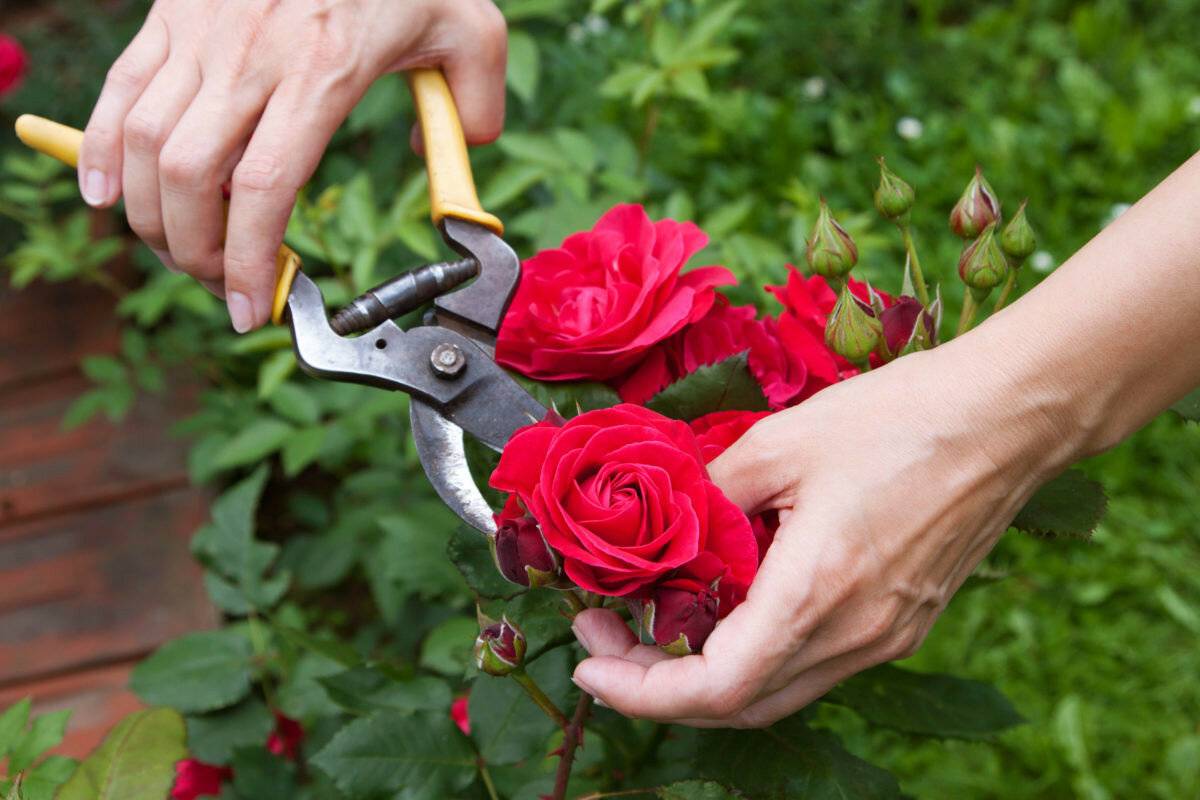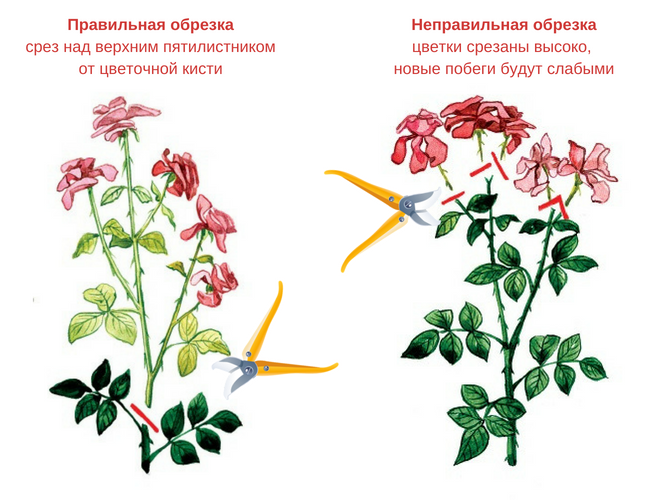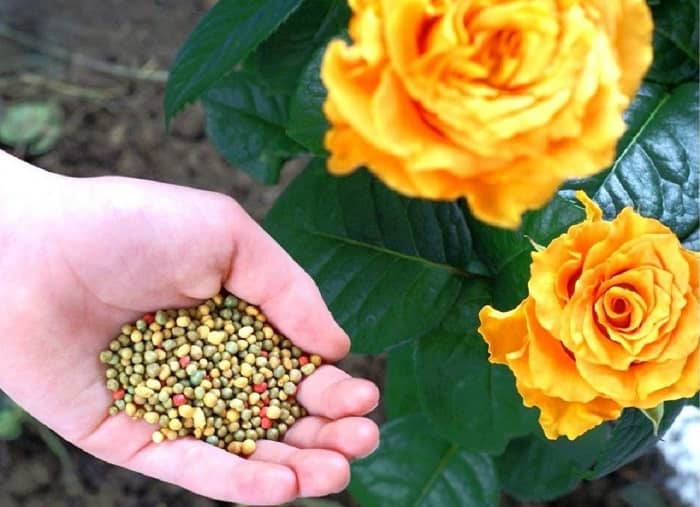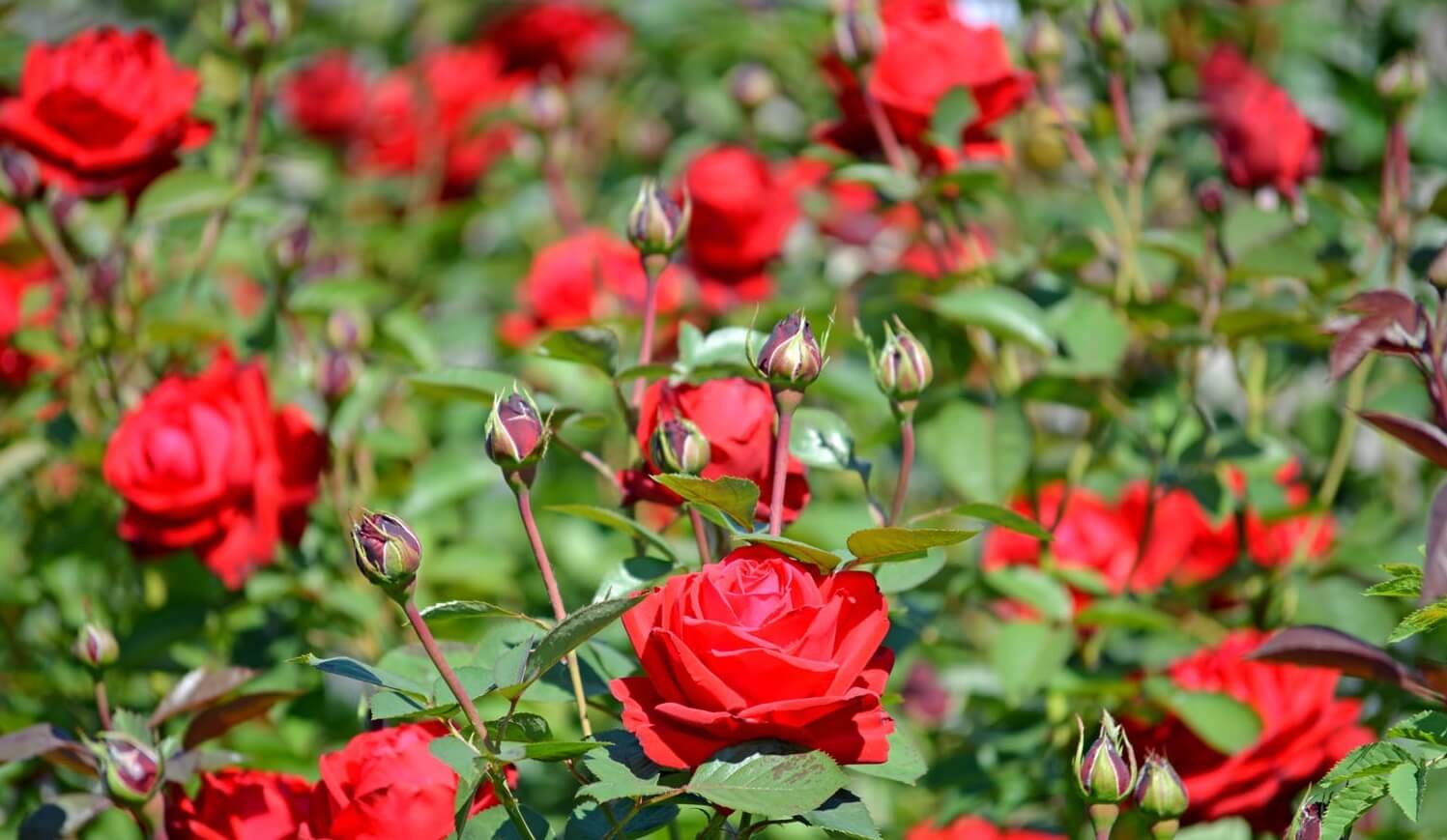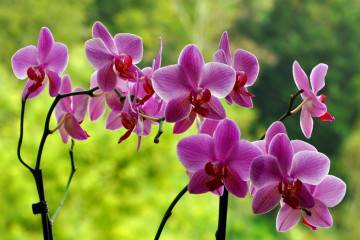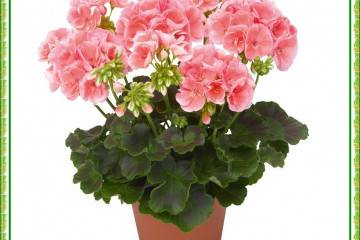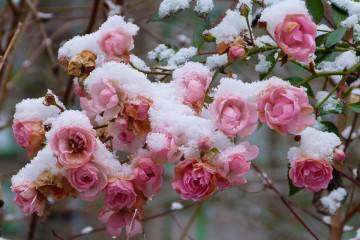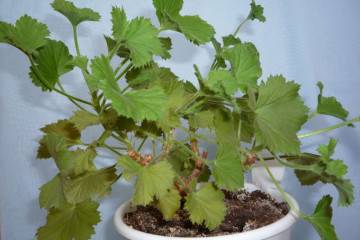How to prune roses after flowering in summer so they bloom again
Content:
The queen of flowers, the rose, requires attention throughout the season. There will be little routine care for blooming beauties. Florists need to know all the secrets of their maintenance and care. One such secret is how to prune roses after flowering in the summer so that they bloom again.
Do I need to prune roses after the first flowering
A rose bush needs pruning from spring to autumn. The first pruning of the shrub is molding. Here the grower easily determines the scope of work - shoots that are too long, dry and frozen branches are removed. Further pruning by some rose growers does not take place until the fall. And in vain. Summer pruning plays an important role not only in flowering and development, but also in preparing the bush for wintering.
Why prune roses after flowering
The purpose of flowering any plant is reproduction. After flowering, the rosette begins to form a fruit with a seed. The flower gives a lot of energy to the ripening of seeds. The bush will not bloom again, since it does not have enough strength, and the goal has already been fulfilled - the seed is ripe. If you cut the flowers, before the seeds begin to ripen, the rose will throw away its buds over and over again.
Hybrid teas and floribunda are roses that bloom several times per season. Their flowering is wave-like and thanks to pruning, you can easily adjust the flowering intensity, and even the size of the bud.
Climbing roses that bloom profusely and once a summer also need pruning. First of all, the bush will not waste energy on the formation of fruits. The stored energy will go into the roots and will be spent on preparing new shoots for the next year. Roses, whose buds were cut in time after flowering, leave better in winter and withstand cold weather. Their roots are stronger and their vines are thicker.
Another function of pruning roses in the summer after flowering is to thin out the bush. The branches that grow inside the shrub should be removed regularly. Thanks to this bush pruning, access to fresh air and sunlight opens up.
Regular removal helps in time to identify wild shoots from the root in grafted roses, as well as empty shoots. "Wilds" have the external features of an ordinary rose hip - seven leaves, matte light green color, without the characteristic red tint of noble roses. Empty shoots have an unformed bud or a darkened scar at the tip. Such twigs will not bloom in season. They appeared as a result of wintering, and they should be removed so that the bush does not waste its energy on them.
Timing of pruning
Summer pruning begins after the first faded bud. Depending on the variety, this period falls in June and July. Moreover, the earlier the flower, which has already begun to wither, is cut, the more the shrub will retain its strength for the subsequent ejection of the buds. As soon as the petals begin to wither and even fall off, the flower is ready to be removed.
A cut for a bouquet will be useful if you cut no more than 30% of the flowering from the bush. The twigs for the bouquet should be cut correctly, leaving flowering buds.At least one flowering bud should remain on the cut branch. She will give a new escape for the next season.
In mid-August, it is already worth starting to prepare the bush for wintering. Therefore, it is no longer necessary to provoke flowering during this period. The reasons are simple:
- the rose will not have time to prepare for the cold.
- some buds will never bloom due to lack of heat and light.
The signal for winter preparation for the shrub will be just the remaining fruits and the ability to form a seed. Sluggish petals are torn off from such roses, and the “rosehip” itself is left.
How to properly prune faded rosebuds for re-flowering
Those who try to prune the flower itself, without a twig, only make their rose bushes worse. The remaining branches stretch upward, becoming thin and weak. Why should a shrub waste its energy on the growth of branches, if you can form lush buds. Cut off faded roses together with a branch to the first leaf, the first bud, or using the long cut method - up to 3 buds from below. Which cut method to choose depends on several factors.
If the flower is located on the shoot from the root, then a long pruning should be applied. On such a shoot, 3 buds should be left below. This season, the shoot will no longer bloom, and the next season will branch out. But after such pruning, the shrub can release another flowering shoot from the root.
Medium pruning is most commonly used. It is suitable for shrubs over two years old, as well as for multi-flowered varieties that bloom in whole bouquets. Medium pruning is done before the shoot or bud. The shoot must be strong, it will have the following buds. If the cut is made before the kidney, it should be oriented outward.
A short cut is used closer to August, so as not to wait for the growth of new branches for a long time. It is needed to remove only flowers. A short cut will not provoke the release of new buds in the fall. This is what is required to prepare the rose for winter. But if you use the method at the beginning of summer, after the first flowering, the result will not please. Many buds will appear, but they will be small, thickened and weak. The flowers do not last long on the branch.
The cut itself on the rosette is made at an angle of 45 °. Just 1 cm higher above the bud or shoot. So, the decorative effect of the branch is preserved, and the cut is made invisible. If you cut it higher, then often such a branch simply dries up. The cut site heals quickly and does not require additional processing.
Schemes for pruning roses of various varietal groups
The flower grower should understand that by carrying out summer pruning, he literally forms a bush for the next year. It is not enough just to cut an unnecessary flower so that the fruit does not form. It is necessary to think in advance about future shoots that will grow not only this season, but also in the coming spring.
Pruning hybrid tea varieties
Rose varieties that bloom several times over the summer are especially in need of summer pruning. Floribunda and hybrid teas should be cut with a medium cut. You should lead from top to bottom from the flower and go to the first bud or shoot. Leaving a centimeter above the future branch, an oblique cut is made. If the first bud looks inside the bush, you should skip it and go down below. The bud that grows inside the bush will be weak and with a small flower, since it will not receive enough sun and air.
Pruning a room rose
A home rose that grows in a pot also needs pruning. Flowers should be cut when they are fully in full bloom and their core is visible.For a cut, you need to count five buds from the top of the flower. Cut should be 1 cm above the sixth bud. If the branch has already bloomed earlier and was cut off, a knot forms on it, which can spoil the decorative effect of the plant. The cut can be done on the main branch, removing the ugly knot.
Cutting scheme for climbing varieties
Most climbing roses bloom profusely and continuously, but only once a summer. The intertwining roses have faded and what to do next with them. After flowering, pruning is done already forming for the next year. That is, all two-year-old shoots are removed. Their branches will be dark and woody.
From the shoots of this year, 5-6 branches are left, which are cut below the last flower above the first bud. The rest of the young shoots are cut completely or half the length. It all depends on the desired shape of the bush.
Ground cover varieties bloom until autumn. At these roses, a peduncle twig with dull flowers should be cut off. So the bush is unloaded and retains food for further flowering. If there are many unopened buds on the branch next to it, you should wait until the whole "panicle" has faded and then cut it off.
Further care of the shrub
Thanks to regular visits to the flower garden and pruning, it is very convenient to keep an eye on the rose bushes. Examine them for pests or diseases. It is so easy to prevent a lot of problems. After all, an unnoticed fungus will develop in the fall during the rains, and in the winter a weakened bush can die.
Of course, spring preventive treatment usually protects the bush until autumn. But diseases and pests can come in the middle of summer. In the summer, the following diseases most often develop on greenery:
- black spot;
- rust;
- powdery mildew.
The leaves are damaged by black or red spots. If the shrub is affected by powdery mildew, the buds and leaves are covered with a white bloom.
Of the pests, on the rose in the summer you can find:
- aphids;
- whitefly;
- leaflet;
- spider mite.
Damaged areas of leaves and branches must be removed and burned. It is necessary to process not only damaged bushes, but also neighboring plants. In summer, the treatment of rose bushes is best done in the evening, in dry weather. After treatment, it is important to pay attention to the source of the disease or pests. Tidy up the moisture regime and cleanliness of the soil under the bush.
If the summer season is dry, after flowering and pruning, the rose needs to be well moistened. At least two buckets of water are poured under one bush.
After watering, all weeds should be removed around the bush. They are often a breeding ground for pests. If the soil is very compacted, you need to loosen it to provide oxygen to the roots.
You can protect bushes from rapid moisture loss and weed growth with mulch. After watering, the soil is mulched with bark or wood chips. Cover it with a layer of at least 10 cm, leaving a small area around the trunk.
Correct completion of pruning - top dressing
The main condition for the second and third wave of rose blooming is sufficient nutrition. By pruning, the shrub saves nutrients. And with the help of regular summer complementary foods, these reserves are replenished.
The main part of nitrogen fertilizers, stimulating the growth of green mass, should be applied in the spring. In summer, the plant switches to flowering and root growth. To help him do this he needs the following minerals:
- Phosphorus is the most important bloom aid. It stimulates the abundant release of large buds. It is also an excellent root growth stimulant.
- Magnesium helps the bush to set buds. He is responsible for the brightness of the petals and the color saturation of the petals.
- Boron - is responsible for metabolic processes at the cellular level, regulates the growth and respiration of cells.
- Iron as a prophylaxis against chlorosis.
- Manganese, which is involved in the processes of photosynthesis and is responsible for plant nutrition. Powerful growth and flowering stimulant.
Complex fertilizers contain optimal doses of all the necessary minerals and elements to support the growth and abundant flowering of rose bushes.
Fertilizers can be applied to the soil or sprayed on the green part of the bush. When adding complementary foods to the soil, it is important to do it in the already moistened soil so as not to burn the roots. You can add complementary foods on the day of pruning, after sunset. If using the spray method, it is important to do it early in the morning, or in the evening, when the sun has already set, so that the fumes do not burn the bush.
The following are suitable organic fertilizers:
- chicken droppings;
- cow dung;
- ash;
- infusion of weeds;
- yeast feeding.
Organic matter increases soil fertility, attracts worms, which in turn loosen the soil and saturate it with oxygen. The use of organic matter significantly reduces the growth of weeds in the summer cottage. Mineral and organic fertilizers are best alternated throughout the season.
The beautiful rose is worth all the effort that the rose grower makes throughout the season. Roses are presented with the most beautiful flowers, aroma and mood. The more love and care is invested in the rose bush, the more magnificent and beautiful the flower bed will be.

